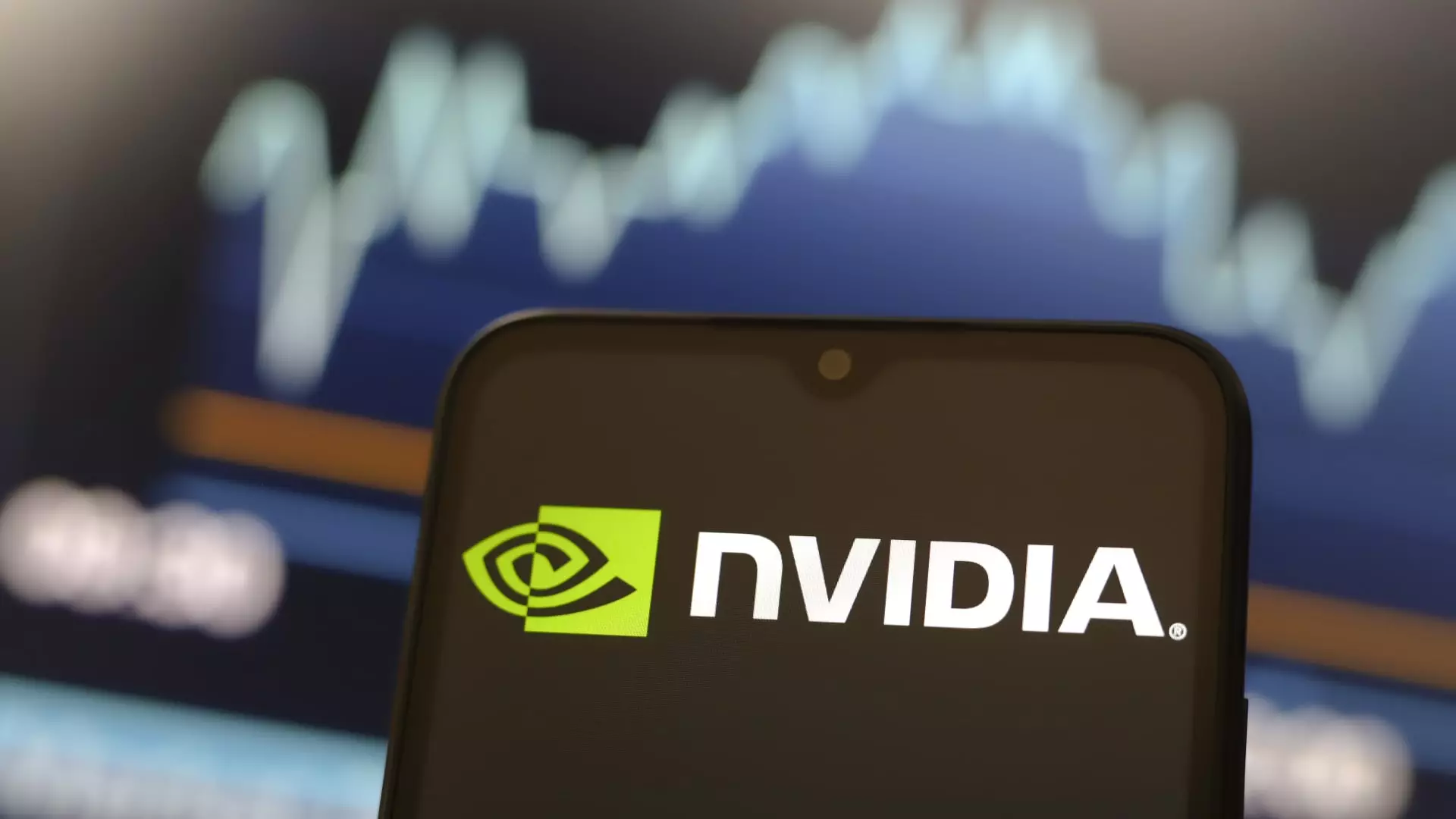Nvidia, the tech powerhouse known for its pivotal role in the development of artificial intelligence (AI) and graphics processing units (GPUs), is experiencing a notable shift in its stock performance. Following an outstanding run, where shares surged by an impressive 166% this year, the stock recently entered a correction phase, highlighting significant volatility in the market. Despite a broader upward trend in the Nasdaq Composite, Nvidia’s decline raises questions about the sustainability of its previous gains and the overall health of the tech sector.
Market corrections are widely characterized as declines of 10% or more from an all-time high. Nvidia’s stock recently closed at approximately 11% off its peak of $148.88, which it reached last month, officially marking its entry into correction territory. Investors in Nvidia have been confronted with a paradox: on one hand, there is optimistic enthusiasm surrounding AI innovations; on the other, the company’s stock performance suggests a more hesitant market sentiment. As Nvidia grapples with this dichotomy, investor sentiment appears to waver.
The recent downturn in Nvidia’s stock may indicate a broader trend of profit-taking among investors in the wake of a highly profitable year. With Nvidia at the forefront of AI technology and the demand for its GPUs surging, particularly after the launch of ChatGPT in late 2022, many analysts had high expectations. However, as shares have underperformed, it seems that some investors are reallocating their resources within the tech sector. Interestingly, this shift isn’t confined to Nvidia alone; other members of the so-called “Magnificent Seven” tech companies are also experiencing rotations in investor attention, suggesting a dynamic and shifting landscape.
While Nvidia faces challenges, other semiconductor companies appear to be thriving. For instance, Broadcom saw a significant increase in its stock price, soaring by around 11% in one day and achieving a market capitalization of over $1 trillion. This success was fueled by a robust earnings report and positive investor sentiment following strategic communications from the company. The contrast between Nvidia’s struggles and Broadcom’s success illustrates the competitive nature of the semiconductor industry.
Experts point out that the momentum witnessed in companies like Broadcom is attracting attention away from Nvidia. Kim Forrest of Bokeh Capital Partners noted that momentum investors may be seeking quicker growth opportunities elsewhere, alluding to changing market dynamics that could challenge Nvidia’s preeminence in the AI chip sector.
The ongoing underperformance of Nvidia has potential implications for the overall market. As the Nasdaq Composite reaches new heights without Nvidia’s contribution, it raises a red flag about the concentration of growth within select tech stocks and the overall health of the tech sector. Roth MKM analysts have highlighted the $125 to $130 price range as a crucial test for Nvidia and the market at large. If Nvidia continues to languish, it could signal underlying weakness and a lack of confidence in its future trajectory.
Additionally, other semiconductor stocks like Micron Technology, Marvell Technology, and Lam Research have emerged with solid gains, further accentuating Nvidia’s recent struggles. This trend suggests a potential shift in investor interest toward companies with faster growth prospects or more stable performance metrics.
Nvidia’s current stock performance is a compelling narrative of both triumph and uncertainty in the technology sector. While the company’s formidable influence on AI development remains unquestioned, external market forces and competitive dynamics present significant challenges. Investors must tread carefully as this evolving landscape unfolds, monitoring Nvidia’s performance against competent rival firms and assessing broader market sentiments. The next few weeks will be crucial in determining whether Nvidia can rebound from its correction phase and retain its place as a leader in the semiconductor domain or if the trend of profit-taking will pave the way for further declines.

